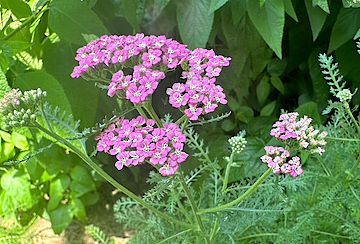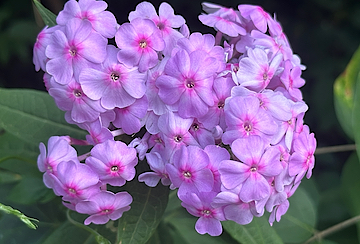
Dyer Plants

Plants offer a wide range of colors for extraction, such as reds and pinks from madder, blues and teals from indigo, or yellows and tans from marigolds and onion skins.
While some plants like weld and dyers' chamomile are deliberately cultivated, wild meadow herbs like yarrow or Queen Anne's lace, and even pests like pokeweed, can still be used to lend fibers and fabrics their stunning colors.
Natural dyeing presents its own challenges: the colors extracted from plants vary wildly when applied to different fibers, many of them are not light or colorfast and with few exceptions they tend to be in the muted, earth tone or pastel range.
Mordants, like alum, copper sulfate, chalk, or soda ash, are added to the dye bath to fix, brighten, or alter the color.
When the desired intensity is reached, the colors of naturally dyed fibers are set by rinsing them in a water-vinegar mixture.
If you only try one natural dye, I recommend turmeric. The end result is a striking mustard yellow to orange color that is completely colorfast and won't run in the wash. Be careful, it stains porcelain.

Crafting Perfume

Home extraction of perfume from herbs and flowers is a lost art, probably because it is extremely difficult and requires a lot of time.
The traditional methods are cold pressing, steam distillation and enfleurage.
Cold pressing is a straightforward method that is suitable for plant materials containing a significant amount of volatile oils, such as pine needles, citrus peel, or bergamot.
Steam distillation requires a still, and precisely controlled temperatures, and works reasonably well for flowers like rose and orange blossoms, lavender, rosemary and mint.
The fleshy white flowers, the perfume mavens, are as sensitive to the harsh processes above as they are fragrant.
Their scent is so easily altered by crushing or high temperatures they require the most elaborate and time-consuming method of extraction: enfleurage.
Thin layers of fragrant petals are placed between glass plates covered in odorless animal fats and replaced with fresh ones every other day until the fats get saturated with their fragrance.
This product, called enfleurage pomade, can either be used as is, or washed with odorless alcohol to capture the volatile oils inside. The spent fat, which still retains some of the fragrance, can be used to make soap.
